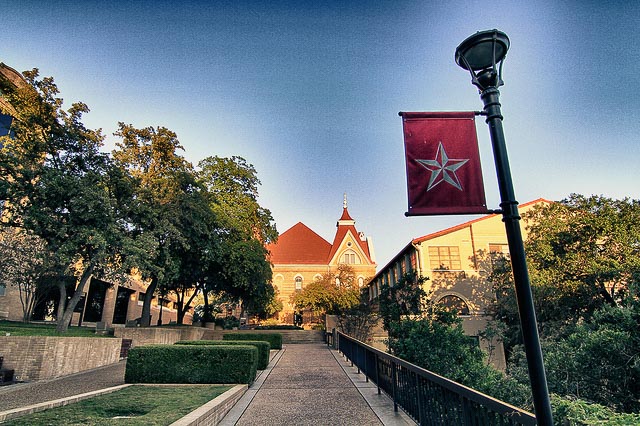The U.S. Census Bureau released its 2014 population estimates last month, signaling what's quickly become an annual tradition: highlighting San Marcos, Texas as the country's fastest-growing city over 50,000 people.
For three years in a row, San Marcos has taken the honor, approaching an 8 percent growth rate each time. Today, its population stands at 58,892.
Why has the city - largely unknown outside of Texas - exploded? It's all about location.
Nestled between San Antonio and Austin, San Marcos is smack in the center in one of the country's fastest growing mega-regions.
But what accounts for the city growing at such a blistering pace?
"It's affordable, and there's an opportunity to live here and work in several places," said Kristi Wyatt, a spokeswoman for the city. "And businesses are moving here because they can reach an employee pool due to the proximity of those areas."
Downtown Austin is about a 35-mile drive from the center of San Marcos. San Antonio is about 50 miles away.
Austin added the fourth-most people of any city in the country last year, and San Antonio added the fifth-most. And San Marcos is commuting distance from both of them. Given its location, it can't help but grow.
The city has taken some of its own steps as well to encourage growth. In 2013 it passed a smart-growth focused master plan for future development, and right now it's rewriting its land development code to implement the goals and priorities laid out in that master plan.
Even before formalizing that vision, the city was making it easier for people to become established in the city. It approved building permits for an average of 1,700 new homes in 2011, 2012 and 2013, according to U.S. Department of Housing and Urban Development data.
To put that number in perspective, San Marcos at that rate was building roughly 30 homes for every 1,000 residents. Austin - far and away the most prolific homebuilder of any large Sun Belt city - builds about 10 new homes for every 1,000 residents a year. Los Angeles builds less than two homes per year for every 1,000 residents.
Perhaps more importantly, 83 percent of San Marcos's new homes in those years were multifamily units, the sort attainable for young families or people at the beginning of their careers.
The city is home to Texas State University, a huge institution with nearly 37,000 students. That type of housing makes it possible for young adults to afford to stick around after graduating.
The Greater San Marcos Partnership, a local economic development group, has focused its efforts on cultivating the young, educated workforce that appeals to industries in Austin and San Antonio. It also tries to attract companies to town that are seeking those types of workers.
"We're working on attracting talent," said Adriana Cruz, president of the Greater San Marcos Partnership. "We have a beautiful river and an attractive downtown, but we need to make sure we have the diverse housing options that accommodate talent that wants to be here."
The important thing, Cruz said, is that San Marcos is in a position to capture growth that Austin can't accommodate.
"In my estimation, as the center of Austin becomes more expensive from a quality of life standpoint, some of that growth will go into the surrounding communities," she said.
In Austin, during the first week of June, the average home for sale was listed at $688,000, according to the real estate website Trulia. San Marcos homes averaged $301,000.
City officials say there haven't been much in the way of strains on public service levels, at least so far.
"Obviously there's been an increase in traffic," said Wyatt, the city spokeswoman. "But we've tried with traffic management plans to make it easier to get around, with walkable and bikable areas and alternative transportation. You certainly see more people walking around downtown than in the past."


